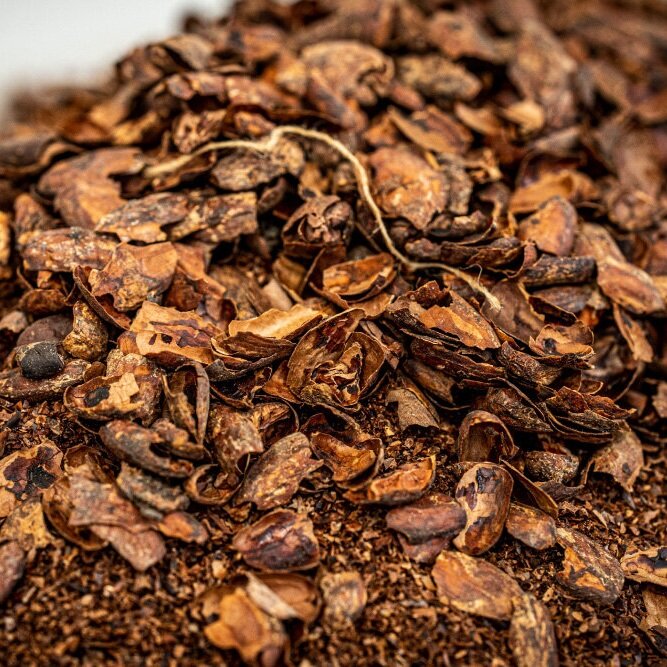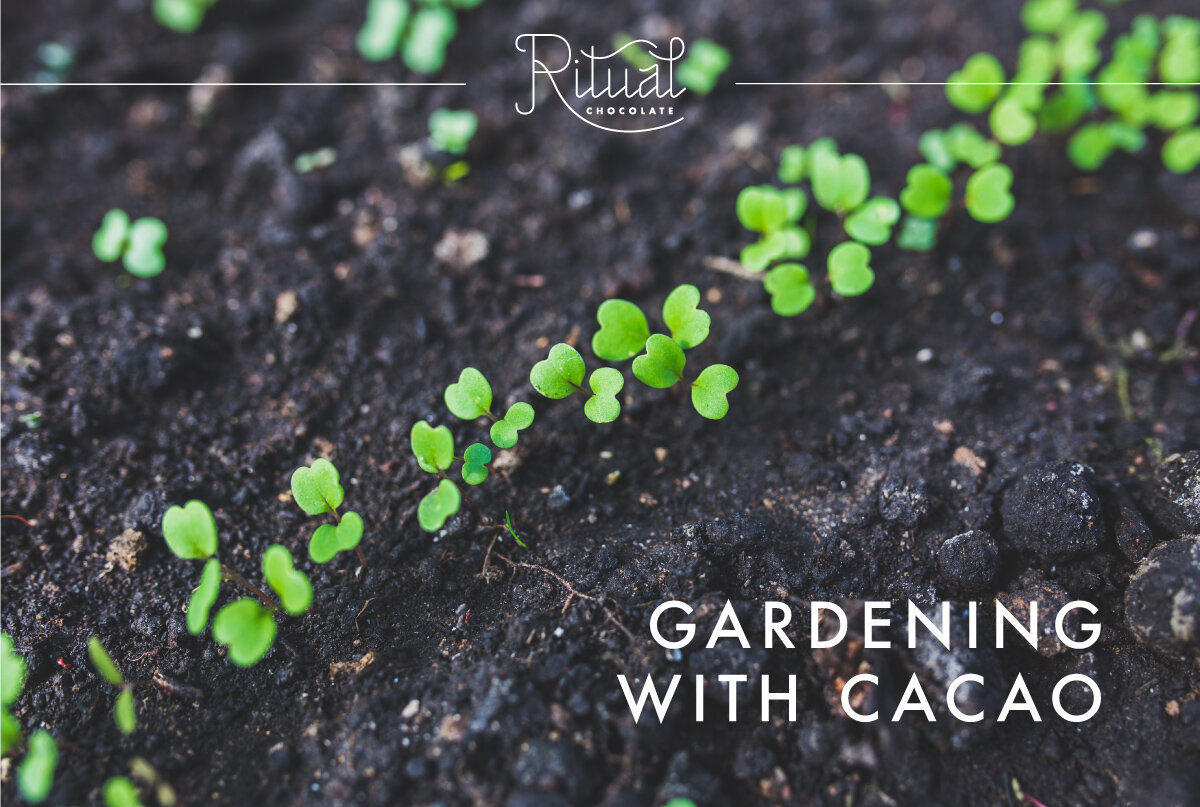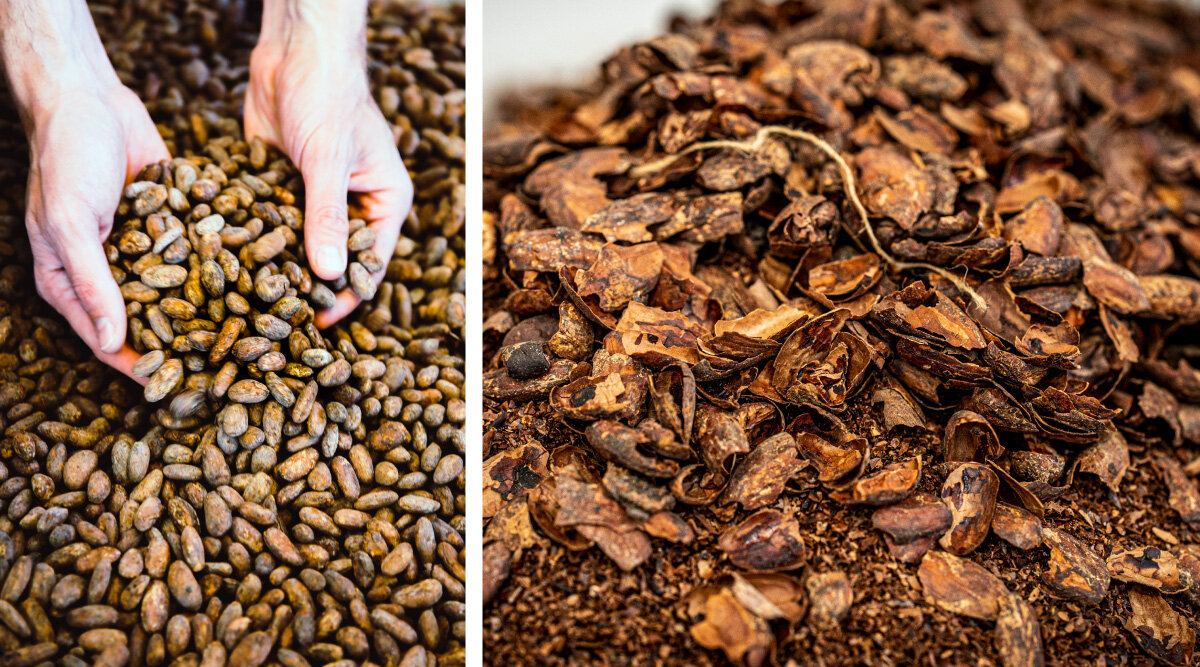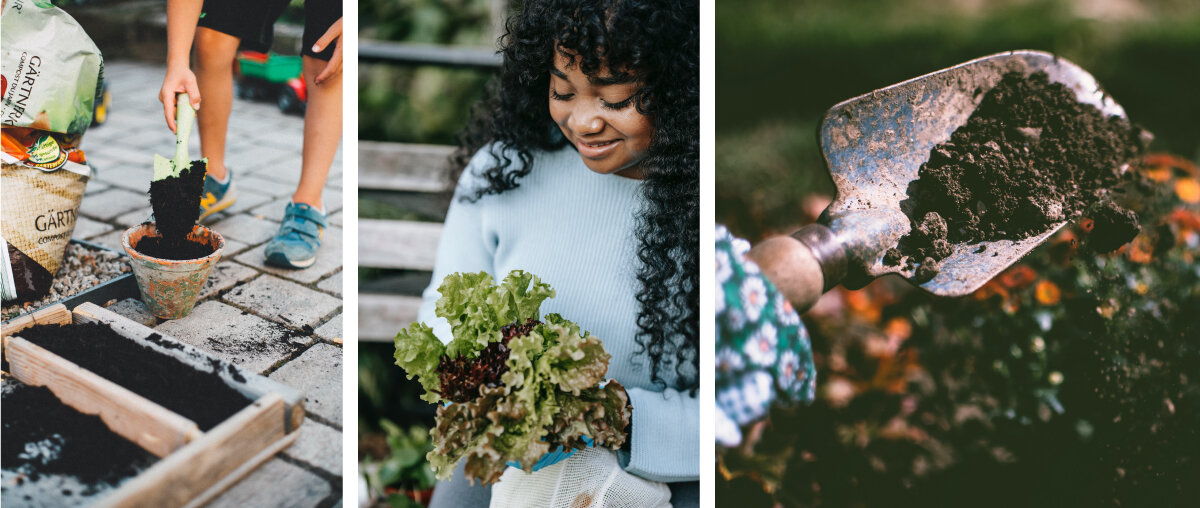Cacao shells are the hulls that cover each cacao bean. When making our chocolate, the beans are roasted, which cracks and loosens the shell and in the process sterilizes them so that they are weed and bacteria free. Once roasted we run the beans through a winnowing machine, separating beans into cacao nibs and shell fragments. In all chocolate making, shells are not added to chocolate as they don’t have the pleasant taste and texture of the beans.
Although cacao shells are a leftover from the chocolate making process it doesn’t mean they have to go to waste! They have many great properties to be useful in other applications, including your garden soil.
We’ve recently partnered with a wonderful plant nursery in Heber called Country Gardens & Nursery. They are taking all of our cacao shells to use and sell to customers in their shop, giving our by-product shells new life & sustaining local gardening.
All our cacao is grown and harvested using organic practices, so they are safe to use in your garden. Many gardeners enjoy the sweet smell and attractive appearance of cocoa shell mulch in addition to its mineral rich benefits.
Garden Benefits
-
There are several cocoa mulch benefits to using cacao shells in the garden. Organic cocoa mulch, which contains nitrogen, phosphate and potash and has a pH of 5.8, adds beneficial nutrients to the soil.
-
Using cacao shells in the garden is an excellent way to increase soil vitality and is an attractive top cover for both flower beds and vegetable patches.
-
Cocoa bean hulls also help retain moisture in garden beds and reduce weeds organically, eliminating the need for chemical-laden herbicides.
-
The hulls have a naturally occurring protein that complements soil structure. While cocoa bean mulch works downward in soil, friendly bacteria become stimulated by the protein, creating a more fertile environment for other microorganisms. As a result, plant roots have ample nutrients and loose soil for easy growth into the ground.
How to Use
-
Topsoil/Covering - Providing a strong but lightweight top dressing, cocoa bean hulls act just like common mulches because they stop weeds from competing with garden plants.
-
Addition to Compost - Add shells to your rotating compost will add balance with rich-minerals and proteins.
Things to Note
-
CACAO IS TOXIC TO DOGS. Dog owners need to beware when using cocoa shell mulch that the shells do contain varying amounts of two compounds that are toxic to dogs: caffeine and theobromine. If your dog ingests the shells you should take them to the vet immediately.
-
Be aware that with the increase of moisture captured in the soil from the shells, it can attract critters and in rare cases, mold. So just check when watering that the soil is drying out between waters.






